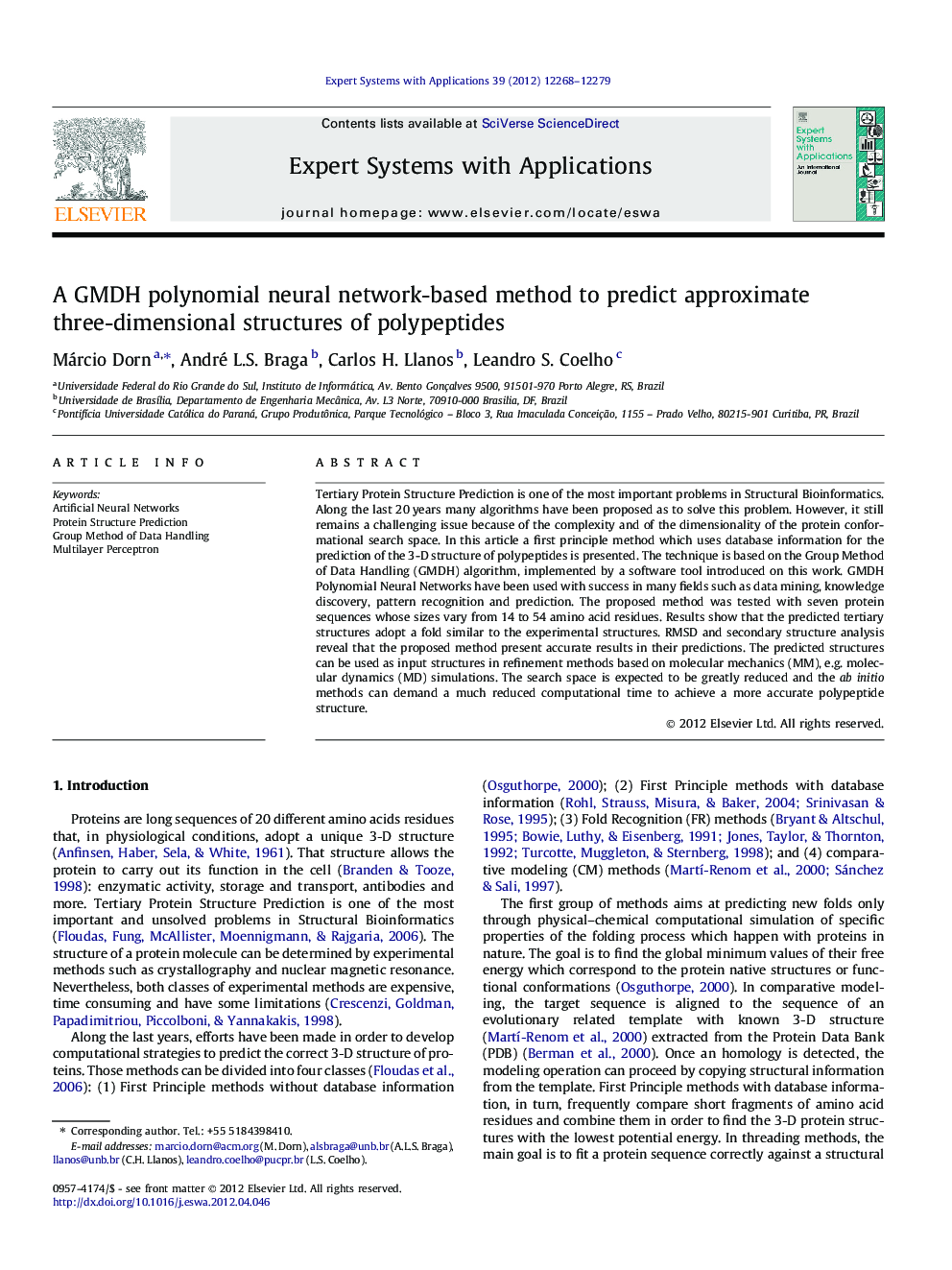| Article ID | Journal | Published Year | Pages | File Type |
|---|---|---|---|---|
| 383434 | Expert Systems with Applications | 2012 | 12 Pages |
Tertiary Protein Structure Prediction is one of the most important problems in Structural Bioinformatics. Along the last 20 years many algorithms have been proposed as to solve this problem. However, it still remains a challenging issue because of the complexity and of the dimensionality of the protein conformational search space. In this article a first principle method which uses database information for the prediction of the 3-D structure of polypeptides is presented. The technique is based on the Group Method of Data Handling (GMDH) algorithm, implemented by a software tool introduced on this work. GMDH Polynomial Neural Networks have been used with success in many fields such as data mining, knowledge discovery, pattern recognition and prediction. The proposed method was tested with seven protein sequences whose sizes vary from 14 to 54 amino acid residues. Results show that the predicted tertiary structures adopt a fold similar to the experimental structures. RMSD and secondary structure analysis reveal that the proposed method present accurate results in their predictions. The predicted structures can be used as input structures in refinement methods based on molecular mechanics (MM), e.g. molecular dynamics (MD) simulations. The search space is expected to be greatly reduced and the ab initio methods can demand a much reduced computational time to achieve a more accurate polypeptide structure.
► GMDH neural networks are used to predict 3-D polypeptides structures. ► GMDH results are compared against results from standard MLP neural network models. ► Two variations of the GMDH method are analyzed and compared with MLP models. ► The proposed method was tested with seven protein sequences. ► Analysis reveal that the proposed method presents accurate results.
